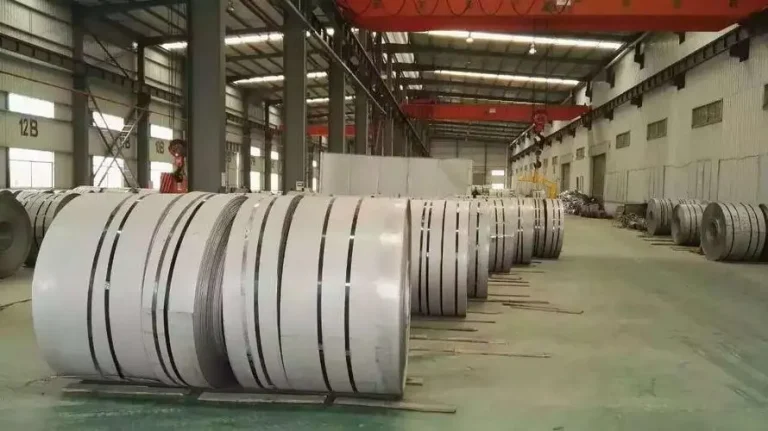
Stainless Steel Foil for Heat Treatment: Complete Application Guide
Heat treatment is a foundational process in modern metallurgy that determines the final strength and durability of metal components. When

Stainless steel, an essential material in various industries, often raises eyebrows with its non-magnetic properties. But what lies behind this fascinating characteristic? Exploring the why stainless steel is not magnetic, this comprehensive analysis delves into five key perspectives: the chemical composition, the influence of temperature, the role in industrial applications, the myths and misconceptions surrounding its magnetic properties, and the future of research and technological advancements. Whether you’re a scientist, engineer, or just curious about the material world, this article offers insights and understanding that will engage your interest and answer the question that has long intrigued many: Why isn’t stainless steel magnetic?
Stainless steel is a unique alloy. It’s known for its corrosion resistance but equally mysterious for its non-magnetic nature. This perspective explores the chemical composition, delving into the atomic structure and understanding how this contributes to its non-magnetic behavior.
The primary element that sets stainless steel apart is chromium. It usually makes up at least 10.5% of the alloy. Chromium forms a protective layer on the steel, preventing rust. However, its influence on the magnetic properties is less understood.
Often, stainless steel contains nickel. This element has an interesting effect. It changes the crystal structure of the steel from ferritic to austenitic. This transformation significantly impacts the magnetic properties.
In austenitic stainless steel, atoms are aligned in a particular pattern that does not allow for the formation of magnetic domains. This structure is different from the ferritic structure where magnetic domains can form, and the material can exhibit magnetic properties.
Stainless steel’s non-magnetic nature isn’t universal. Ferritic stainless steel, which lacks nickel, can be magnetic. The addition of nickel and the resultant austenitic structure is key to the non-magnetic property in most stainless steel types.
The process of manufacturing also affects the magnetic properties. Cooling rates, mechanical working, and other factors can change the crystal structure, affecting magnetism.
The chemical composition of stainless steel, especially the presence of chromium and nickel, directly influences its magnetic properties. A deep understanding of these elements and their interaction unlocks the mystery of why stainless steel is often non-magnetic.
Stainless steel’s magnetic properties are a subject of great interest. This perspective investigates how temperature affects the magnetic nature of this material. From cooling methods to everyday applications, temperature plays a vital role.
Rapid cooling of austenitic stainless steel may induce a martensitic transformation. This change can result in the material becoming partially magnetic.
In high-temperature applications, the atomic structure of stainless steel may shift, altering its magnetic properties.
At very low temperatures, even austenitic stainless steel might exhibit some magnetic properties. This reveals the sensitivity of stainless steel’s structure to temperature changes.
Austenite, the non-magnetic phase of stainless steel, shows varying stability. Temperature changes can lead to the transformation of austenite into other phases, each with different magnetic characteristics.
Martensitic transformation, which can be triggered by temperature changes, plays a vital role in the magnetism of stainless steel. It alters the crystal structure and magnetic domains within the steel.
The transformation is not merely physical. It’s governed by complex thermodynamic principles. Understanding these principles provides insight into why and how stainless steel behaves the way it does.
The sensitivity of stainless steel to temperature has practical implications. From household appliances to industrial equipment, understanding this behavior helps in design and material selection.
Temperature has a profound effect on the magnetic properties of stainless steel. Its impact ranges from manufacturing processes to everyday applications. A comprehensive understanding of these effects offers fascinating insights into this versatile material.
Stainless steel is a favorite in various industries, not just for its resistance to corrosion but also its non-magnetic properties. This perspective focuses on why this aspect is vital for specific applications and how industries leverage this unique property.
Non-magnetic stainless steel is essential in medical devices. MRI machines, for instance, require materials that do not interfere with magnetic fields.
In naval environments, materials must resist corrosion and not interfere with navigation systems. Stainless steel is often the material of choice due to its non-magnetic nature.
Certain electrical applications require materials that do not interfere with magnetic fields. Non-magnetic stainless steel serves this purpose effectively.
Industries often require customized stainless steel with specific magnetic properties. Understanding and controlling these properties is a complex but essential part of manufacturing.
In certain applications, like in explosive environments, using non-magnetic tools is crucial for safety. Stainless steel’s non-magnetic nature plays a vital role here.
Technology advancements continually push the boundaries of material science. The control over the magnetic properties of stainless steel is part of this exciting frontier.
The non-magnetic nature of stainless steel is not just a curiosity. It’s a critical feature for many industrial applications. This understanding promotes innovation, efficiency, and safety across various fields.
Stainless steel’s non-magnetism is surrounded by myths and misconceptions. This perspective aims to debunk these misunderstandings, offering clarity on this complex subject.
Not all stainless steel is non-magnetic. Ferritic stainless steel, for instance, can show magnetic properties.
Some believe that if stainless steel is magnetic, it’s of lower quality. This is a misconception, as magnetism is not a definitive indicator of quality.
The non-magnetic nature of stainless steel is not absolute. Factors like temperature, composition, and processing can alter its magnetic properties.
There’s a belief that magnetic stainless steel is less corrosion-resistant. However, corrosion resistance depends on other factors like chromium content, not magnetism.
Understanding the myths and misconceptions surrounding stainless steel’s magnetic properties provides a clearer view of this material’s nature. Debunking these myths is essential for both consumers and industries to make informed decisions.
Stainless steel’s non-magnetic properties are still an area of active research. This perspective highlights the exciting avenues of future research and the technological advancements that might change our understanding of this material.
Scientists are continuously researching new alloys of stainless steel. These new compositions might have unique magnetic properties, opening up new applications.
With the advancement of nanotechnology, we can now manipulate materials at the atomic level. This has exciting implications for controlling the magnetic properties of stainless steel.
Future research must also consider environmental impacts. Developing stainless steel that maintains its unique properties while being more environmentally friendly is a significant challenge.
Stainless steel’s non-magnetic property has significant implications for medical technology. Future research could lead to groundbreaking medical devices and tools.
The non-magnetic nature of stainless steel is an ongoing area of exploration. Future research and technological advancements hold great promise for new applications and deeper understanding. The journey of understanding stainless steel’s unique properties is far from over, and the future looks bright and exciting.
Stainless steel’s non-magnetism is an intriguing subject that touches various aspects of science, industry, and daily life. From the complex interplay of its chemical elements to the intricate effects of temperature, from

Heat treatment is a foundational process in modern metallurgy that determines the final strength and durability of metal components. When

Stainless steel coils serve as the backbone for countless consumer products we use daily. These versatile metal sheets combine exceptional